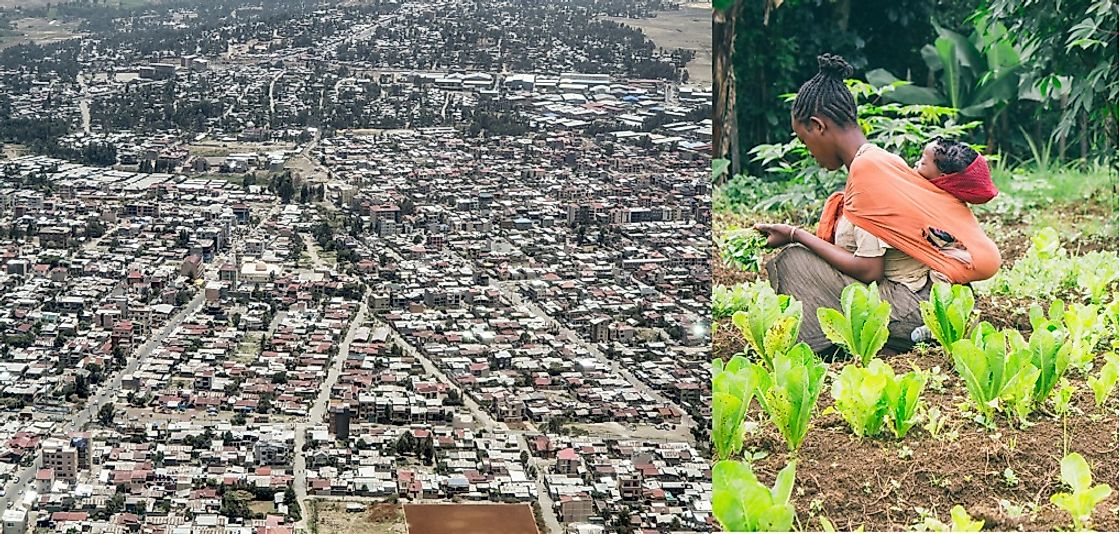The Economy Of Ethiopia

Ethiopia has a mixed market economy, which means businesses are owned by both the public and private sectors. Previously, the economy was largely state-owned. Its economy has experienced between 8% and 11% growth over the last 10 years, although for 2014 and 2015 that rate dropped to 5.4%. It is considered one of the fastest growing economies in the world. This growth has been driven by the agricultural and services sectors. The population here has an extreme poverty rate of 33.5%. In 2014, Ethiopia had a gross domestic product (GDP) of $132 billion, and a nominal GDP per capita of $570. Its workforce employs 37.9 million people, and has an unemployment rate of 24.9%. Of its employed individuals, 85% work in agriculture. This is followed by services (10%) and industry (5%).
Leading Industries of Ethiopia
The leading industry of Ethiopia is agriculture. Much of the agricultural production is traditional by nature, but still provides a significant portion of cash crop exports. This economic sector makes up 46.6% of the GDP and provides opportunities for other economic activities such as marketing and processing. Other industries in the country include food processing, leather, cement, beverages, chemicals, textiles, and metals processing.
Top Trade Partners for Ethiopian Imports and Exports
This country exported $5.56 billion worth of goods in 2014, making it the 110th largest export economy in the world. Its principal exports, by annual export value, include refined petroleum ($1.08 billion), coffee ($842 million), other oily seeds ($724 million), other vegetables ($569 million), and cut flowers ($407 million). A large percentage of its exports go into one of five countries. Namely, these include Kuwait, which imports $801 million worth of Ethiopian goods annually, followed by Somalia ($675 million), Saudi Arabia ($571 million), China ($528 million), and Switzerland ($437 million).
In 2014, Ethiopia imported $16.4 billion worth of goods, giving it a negative trade balance of $10.8 billion. The chief goods coming into this country, ranked by annual import value, include refined petroleum ($3.4 billion), delivery trucks ($522 million), telephones ($477 million), iron structures ($364 million), and palm oil ($336 million). Most of these imports originate from such as countries as China ($4.98 billion), Kuwait ($1.71 billion), Saudi Arabia ($1.54 billion), India ($1.14 billion), and the United States ($685 million).
Challenges Faced by the Economy of Ethiopia
The economy of Ethiopia faces some major challenges that have prevented its continued steady growth. Its lack of diversity and technology pose a major risk for the country. Agricultural output is lower than its full potential because traditional cultivation techniques don’t allow for optimal efficiency. Because the economy primarily relies on agriculture, any unexpected changes to the climate can be detrimental to output. For example, this country regularly experiences drought due to climate change and soil degradation due to livestock overgrazing. Additionally, poor transportation infrastructure makes it difficult to send products to the market.
Future Economic Plans
The government of Ethiopia has recently implemented the second stage of its major "Growth and Transportation Plan". This plan is focused on improving the country’s infrastructure in order to establish a significant manufacturing sector. Its main objective is that the country becomes a lower-middle-income country by 2025. Achieving this objective will require 20% annual growth in the manufacturing industry. Given the country’s progress toward meeting the United Nations Millennium Development Goals, its economic goals seem feasible.











